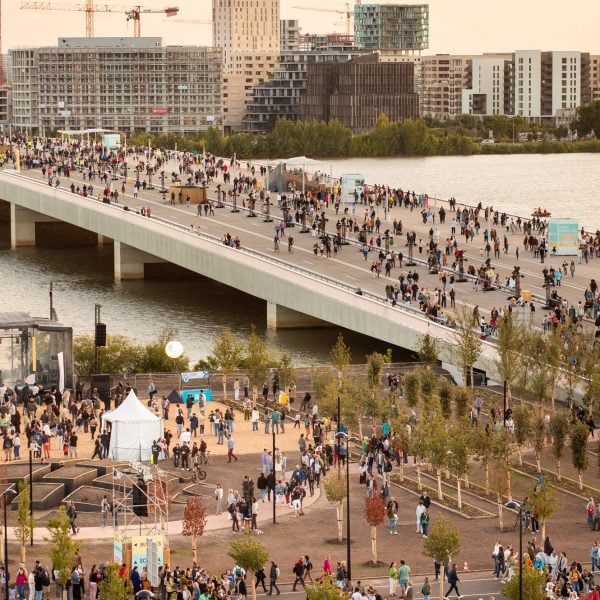Dutch studio OMA has completed a wide bridge across the River Garonne in Bordeaux, France, which is intended to double as a public space for the city.
Designed by OMA partners Rem Koolhaas and Chris van Duijn, the Simone Veil Bridge is 549 metres long and 44 metres wide to accommodate a large pedestrianised space.
“Our design for the Simone Veil Bridge is like a stage but without the theatre,” explained Van Duijn.
“In an era of icons and landmarks, it is very special that the city of Bordeaux decided to build this anti-iconic design.”
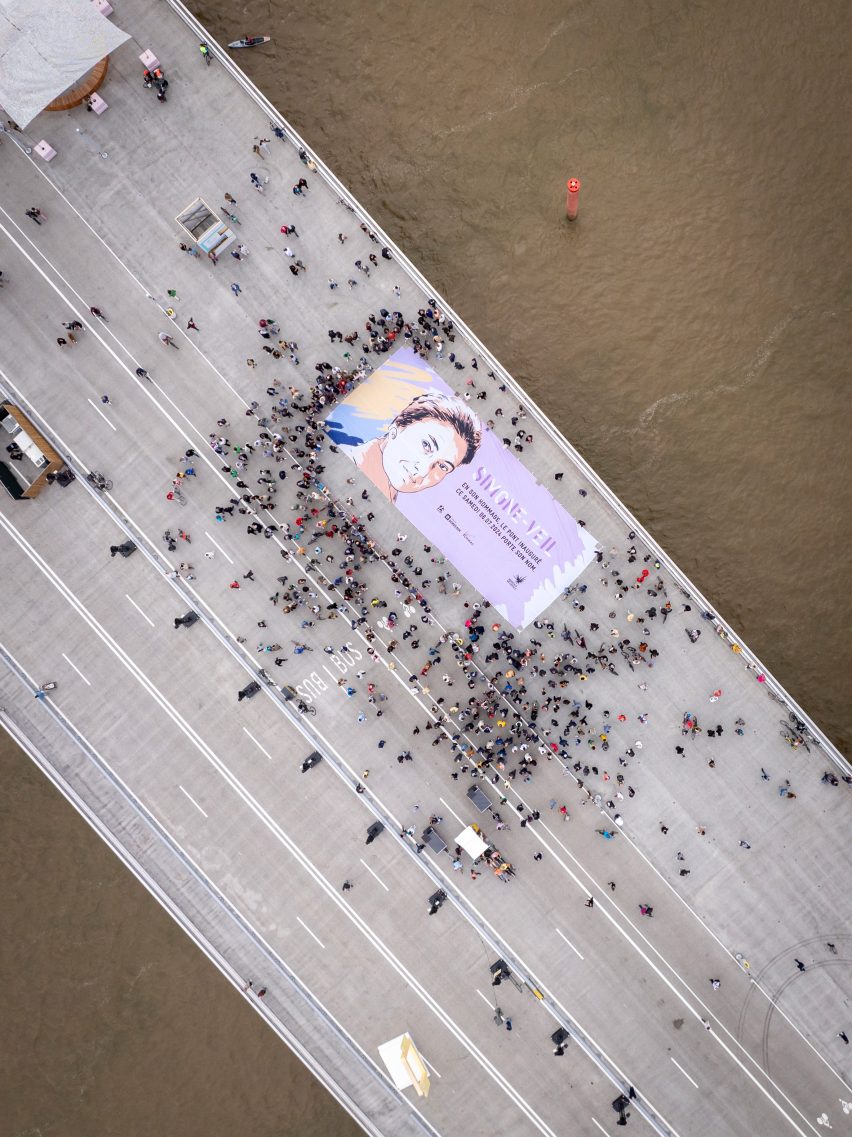
Simone Veil Bridge has dedicated lanes for cars, public transport and bikes, with 28 metres of its width described as “neutral, unprogrammed space”.
The studio expects this space to be used for cultural or commercial purposes including art fairs, festivals and markets.
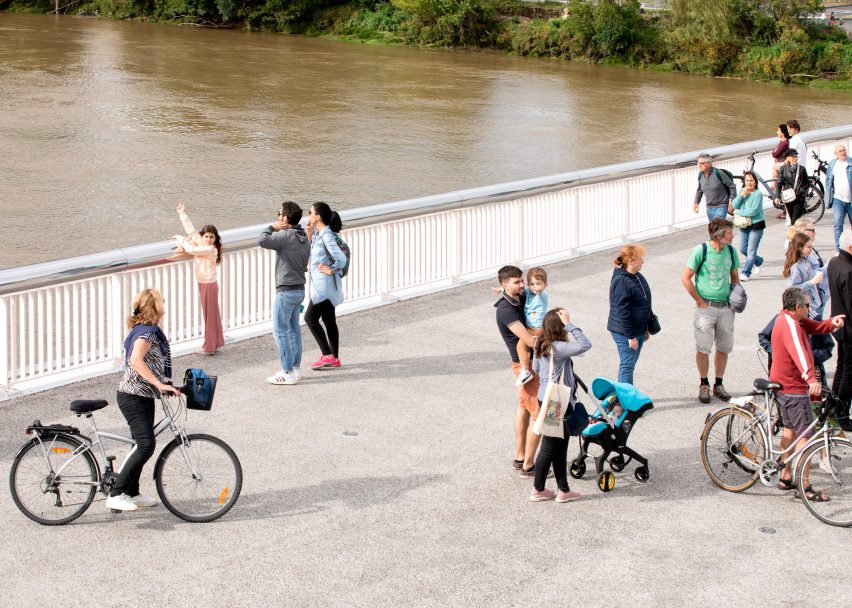
OMA partner Koolhaas explained that the studio designed the structure as an alternative to many modern bridges that are created to be landmarks and utilise complex engineering solutions.
“This bridge is for the people, not for connoisseurs,” he said. “Rather than concentrating on form, the project focuses on performance.”
“Instead of spending its budget on structural gymnastics, it doubles the width with a public space to serve and connect the two adjoining communities that so far have not developed a strong identity,” Koolhaas continued.
“On the model of bridges like the Rialto in Venice, this extra public space can be used for any purpose.”
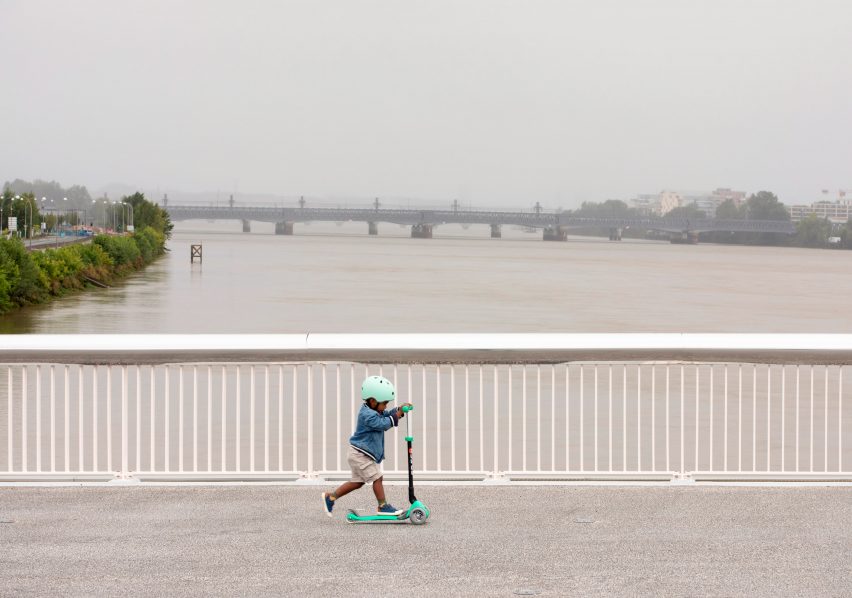
Named after French politician and former president of the European Parliament Simone Veil, the bridge is the eighth that spans the River Garonne in Bordeaux.
It connects the suburb of Bègles on the west bank with the city of Floirac on the east bank where a square filled with trees has been created in front of the Arkéa Arena.
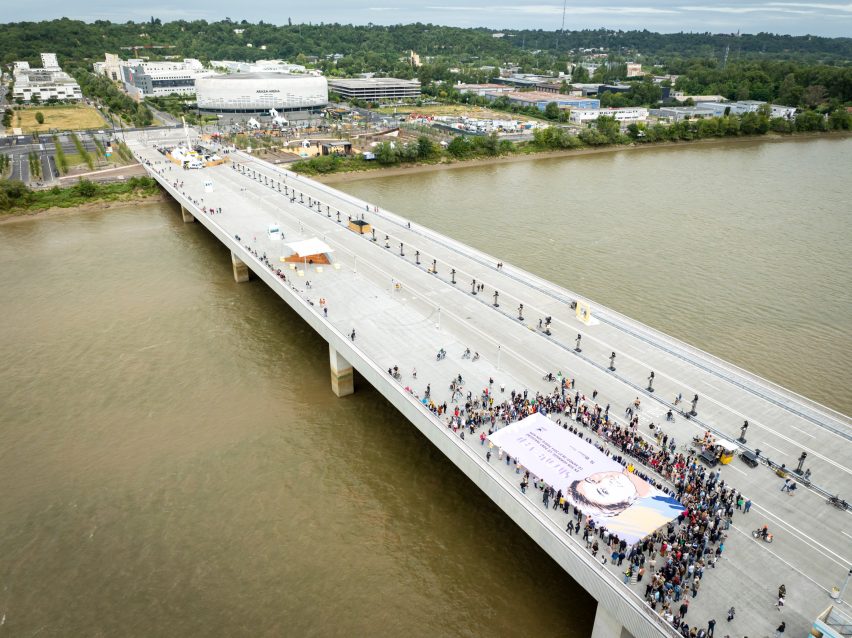
OMA, also known as Office for Metropolitan Architecture, was founded by Koolhaas, Elia Zenghelis, Madelon Vriesendorp and Zoe Zenghelis in 1975.
Recent projects by the studio include a geometric skyscraper in Dhaka and a stepped shopping centre with glass facade in Tokyo.
The photography is by Clement Guillaume, unless otherwise stated.

